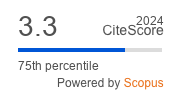Article | Open Access
Mutuals on the Move: Exclusion Processes in the Welfare State and the Rediscovery of Mutualism
| Views: | 4619 | | | Downloads: | 2853 |
Abstract: Declining welfare states and increasing privatization of the insurance sector are leaving an increasing number of people, particularly in Europe, without insurance. In many countries, new initiatives like Friendsurance (Germany), Broodfonds (the Netherlands), and Lemonade (US) have emerged to fill this gap. These initiatives, sometimes called peer-to-peer insurance, aim to make insurance fair, transparent, and social again. Resembling 19th-century mutuals, they pool premiums in (small) risk-sharing pools. We compare eleven new mutuals with respect to their institutional, resource, and member characteristics and find two broad typologies. The first bears the most resemblance to the 19th-century mutuals: Members are (partly) responsible for governance, there is no risk differentiation, premiums are fixed and low, and insurance payouts cover basic expenses only and are not guaranteed. The second group, while also applying risk-sharing and redistribution of unused premiums, is organized more like the present-day commercial insurers it reacted against, e.g., with refined InsurTech methods for risk differentiation and a top-down organization. We thus pose that, while both groups of new insurers reinvent the meaning of solidarity by using direct risk-sharing groups (as is central to the concept of mutuals), they have different projected development paths—especially considering how, in case of further growth, they deal with problems of moral hazard and adverse selection.
Keywords: collective action; institutions; insurance; mutualism; resilience; risk-sharing; solidarity; welfare state
Supplementary Files:
Published:
© Eva Vriens, Tine De Moor. This is an open access article distributed under the terms of the Creative Commons Attribution 4.0 license (http://creativecommons.org/licenses/by/4.0), which permits any use, distribution, and reproduction of the work without further permission provided the original author(s) and source are credited.


